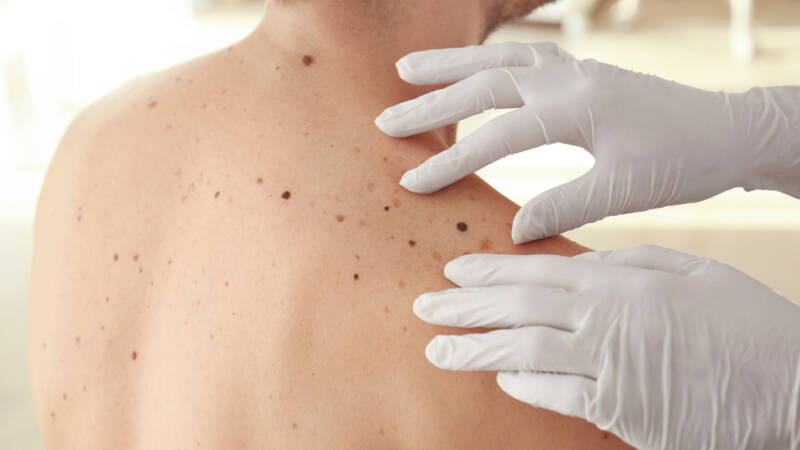Types, Signs and Treatments of Melanoma

The American Cancer Society expect roughly 106,110 new cases of melanoma in 2021 alone. Melanoma skin cancer effects men more than women and kills more than 7,000 people across the United States every year. While deadly, the disease is highly treatable when the cancer has not advanced.
Knowing how to spot melanoma symptoms is the key to catching the disease in its infancy. Primary symptoms, along with causes, risk factors and treatment options, are discussed below.
What is Melanoma?
Melanoma is a serious, yet relatively rare form of skin cancer. Though it does not occur as often as basal cell carcinoma (BCC) or squamous cell carcinoma (SCC), it spreads far more easily than both other forms of cancer. Melanoma starts in the pigment-producing melanin cells of the skin, when they become damaged and develop at an unhealthy rate. As the cancer cells still produce pigment, they typically appear brown, black or darker than the patient’s natural skin tone.
Types of Melanoma
There are several different types of cancer that come under the “melanoma” umbrella. Four of them account for nearly all cases. These are:
1. Superficial spreading melanoma – The most common; spreads across skin’s surface.
2. Nodular melanoma – The second most common; features raised bumps or nodules on the skin’s surface.
These two types of cancer account for nearly all cases of melanoma. The next most common forms of melanoma cancer are:
3. Lentigo maligna melanoma – Represents 10 to 15 percent of cases. Affects older adults with sun-damaged skin.
4. Acral lentiginous melanoma – Represents less than 5 percent of cases. Primarily affects African Americans and Asians.
Causes and Risk Factors
People over 75 years old are the most at risk of developing melanoma, though there’s been a surge in cases amongst young women in recent years. Other melanoma causes and risk factors include:
- Excessive sun exposure
- Having one or more major sunburns
- Using sun lamps or sun beds
- Having a fair complexion and/or fair hair
- Having green or blue eyes
- Having lots of moles
- Having a family history of melanoma
New research also indicates that people with large birth marks (more than 20 cm across) are more at risk of getting melanoma.
Early Signs and Symptoms
It is important to check your skin for moles regularly. When doing so, use the “ABCDE” rule to check for signs of melanoma:
- Asymmetry
- Borders that are jagged
- Color that includes multiple shades
- Diameter of more than 6 mm
- Evolving shape or spread
In addition, soreness, itching and tenderness around moles are cause for concern. Some melanoma patients also report unusual sores and difficulty healing.
Treatment Options
Melanoma that is detected early is extremely treatable. In most cases, the affected mole can be removed with non-invasive laser surgery that does not require inpatient care. Advanced melanoma cancer may be treated with a combination of the following tactics:
- Surgery (without or without skin graft, depending on the size of the affected area)
- Chemotherapy
- Electro-chemotherapy
- Radiation therapy
- Immunotherapy
What To Do If You’re Concerned
Use the “ABCDE” checklist to evaluate any unusual moles or legions on the skin. If three or more of the points apply, it would be wise to get yourself checked out by a doctor or dermatologist. It is far more likely that your skin disturbance is not caused by cancer, but it is better to be safe than sorry.